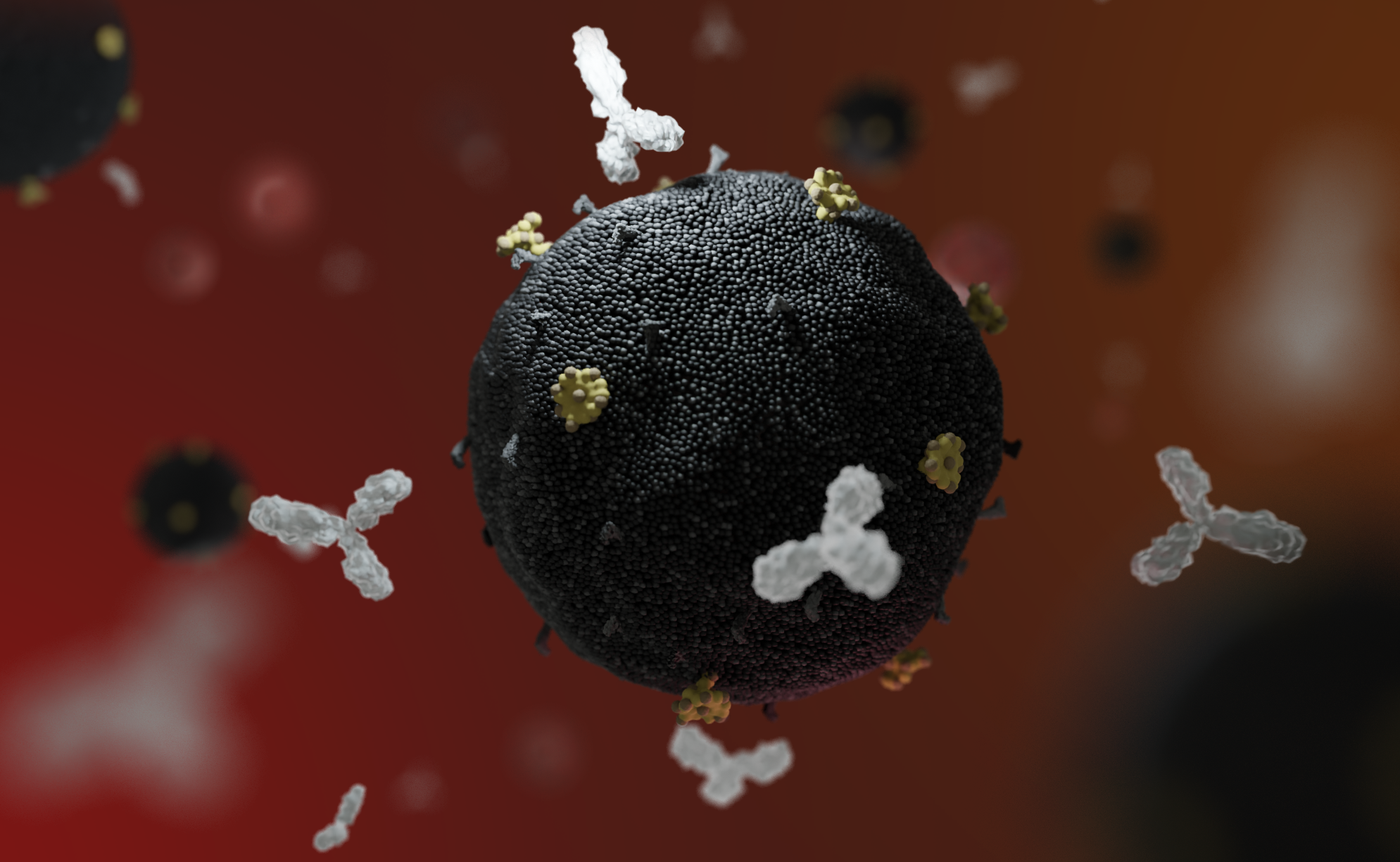Key Takeaways
- Researchers investigated the efficacy of four naturally occurring IgG subclasses against vaginal HIV infection.
- In a humanized mouse model, the antibody VRC07 IgG2 showed substantially reduced protection relative to other IgG subclasses.
BOSTON – Immunoglobulin gamma (IgG) antibodies are produced by the immune system after exposure to HIV. There are four different types of IgG naturally produced in response to infection; however, the contribution of each of these subclasses to preventing HIV infection has been unknown. In a new study published in Science Translational Medicine, researchers from the Ragon Institute of Mass General, MIT, and Harvard studied the potential for different IgG antibodies to prevent HIV transmission in a humanized mouse model. They found that different IgG subclasses provide different amounts of protection against vaginal HIV transmission, which has implications for prophylactic interventions and vaccine development.
“We’ve known for a long time that different antibody subclasses have differences in their ability to engage innate immunity, but we had not measured their relative contributions to HIV prevention until now,” says Alejandro B. Balazs, PhD, a principal investigator at the Ragon Institute of Mass General, MIT, and Harvard and senior author of the paper.
In previous work, Balazs and colleagues developed a novel prevention strategy called vectored immunoprophylaxis (VIP), which uses an adeno-associated viral (AAV) vector to deliver DNA to muscle cells that contains instructions for making antibodies that block HIV. The method has shown promising results in a phase I clinical trial of eight adults with HIV. In the new study, Balazs and colleagues used this technique to explore the capacity for different IgG responses to prevent vaginal HIV transmission in mice engineered to have human immune cells.
The researchers used VIP to deliver instructions to cells for making a broadly neutralizing antibody called VRC07 that blocks HIV’s ability to bind to CD4, an immune cell receptor targeted by HIV. They also attached instructions to make the four different subclasses of IgG: IgG1, IgG2, IgG3 and IgG4. Each IgG subclass carries different regions called fragment crystallizable (Fc) regions, which interact with proteins on the surface of immune cells in different ways. These interactions allow antibodies to induce so-called “innate” immune responses, such as cellular cytotoxicity (killing) or phagocytosis (eating), that destroy HIV-infected cells. Because these Fc regions are different in each subclass, they have varying abilities to bind to immune cells and cause these types of responses.
“The best antibody against HIV will have to be broad, it will have to be potent, but it will also have to have Fc functionality and be able to mediate both cytotoxicity and phagocytosis,” says Jacqueline Brady, PhD, lead author of the paper, who completed the research while a graduate student at the Ragon Institute.
The researchers found that mice expressing VRC07 IgG2, which has poor binding to Fc receptors on immune cells, had reduced protection from HIV compared with other IgG subclasses. Mice expressing VRC07 IgG2 were over five times more likely to become infected with HIV compared to mice expressing VRC07 IgG1, due to the differences in innate immune responses.
“The major difference in these IgG subclasses is that the Fc regions are slightly modified, and that means that how well those antibodies can interact with various innate immune cells through Fc-gamma receptors is going to be different,” says study coauthor Meredith Phelps, a graduate student at the Ragon Institute. “In this paper, we showed that it has actual downstream implications in protection against HIV acquisition.”
The researchers also looked at minimum doses of broadly neutralizing antibodies needed to confer protection. All four IgG subclasses were able to protect at high concentrations, but VRC07 IgG1 was the most effective, and was able to protect even at low concentrations. “We were surprised to find that even low concentrations of antibodies could have significant protective efficacy against vaginal HIV transmission,” Balazs says.
These findings have implications for vaccine development because current vaccines do not specifically select for the development of these more protective subclasses, resulting in suboptimal protection. The differences between IgG subclasses “are probably most important at low antibody concentrations, and it’s likely that any current vaccine strategy will elicit fairly low concentrations,” Brady says. This research shows that IgG subclass is important for optimal HIV intervention, especially at low antibody concentrations.
This work was supported by the Ruth L. Kirschstein Predoctoral Individual National Research Service Award 1F31AI131747-01A1, NIAID R01AI131975, NIAID K22AI102769, NIDA Avenir New Innovator Award DP2DA040254, the MGH Transformative Scholars award, the Charles H. Hood Foundation, and the Gilead Sciences Research Scholars Program in HIV.
About the Ragon Institute
The Ragon Institute of Mass General, MIT, and Harvard was established in 2009 with a gift from the Phillip T. and Susan M. Ragon Foundation, with a collaborative scientific mission among these institutions to harness the immune system to combat and cure human diseases. Focusing on global infectious diseases, the Ragon Institute draws scientists, clinicians and engineers from diverse backgrounds and areas of expertise to study and understand the immune system with the goal of benefiting patients. For more information, visit www.ragoninstitute.org.
About the Massachusetts General Hospital
Massachusetts General Hospital, founded in 1811, is the original and largest teaching hospital of Harvard Medical School. The Mass General Research Institute conducts the largest hospital-based research program in the nation, with annual research operations of more than $1 billion and comprises more than 9,500 researchers working across more than 30 institutes, centers and departments. In August 2021, Mass General was named #5 in the U.S. News & World Report list of “America’s Best Hospitals.” MGH is a founding member of the Mass General Brigham health care system.
Media contact:
Emily Makowski
[email protected]
716-598-0027


 Ragon Institute
Ragon Institute 